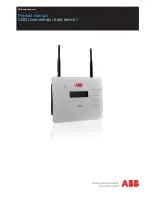
© National Instruments
|
4-15
Figure 4-6.
Differential Connections for Floating Signal Sources with
Balanced Bias Resistors
Both inputs of the NI-PGIA require a DC path to ground in order for the NI-PGIA to work. If
the source is AC coupled (capacitively coupled), the NI-PGIA needs a resistor between the
positive input and AI GND. If the source has low-impedance, choose a resistor that is large
enough not to significantly load the source but small enough not to produce significant input
offset voltage as a result of input bias current (typically 100 k
Ω
to 1 M
Ω
). In this case, connect
the negative input directly to AI GND. If the source has high output impedance, balance the
signal path as previously described using the same value resistor on both the positive and
negative inputs; be aware that there is some gain error from loading down the source, as shown
in Figure 4-7.
M
S
erie
s
Mod
u
le/Device Config
u
red in Differenti
a
l Mode
PGIA
–
+
–
+
–
+
Flo
a
ting
S
ign
a
l
S
o
u
rce
Bi
as
C
u
rrent
Ret
u
rn
P
a
th
s
AI GND
AI
S
EN
S
E
Inp
u
t M
u
ltiplexer
s
Me
asu
red
Volt
a
ge
In
s
tr
u
ment
a
tion
Amplifier
AI+
AI–
I/O Connector
Bi
as
Re
s
i
s
tor
s
(
s
ee text)
V
s
V
m
Содержание PCI-6281
Страница 1: ...PCI 6281...
















































